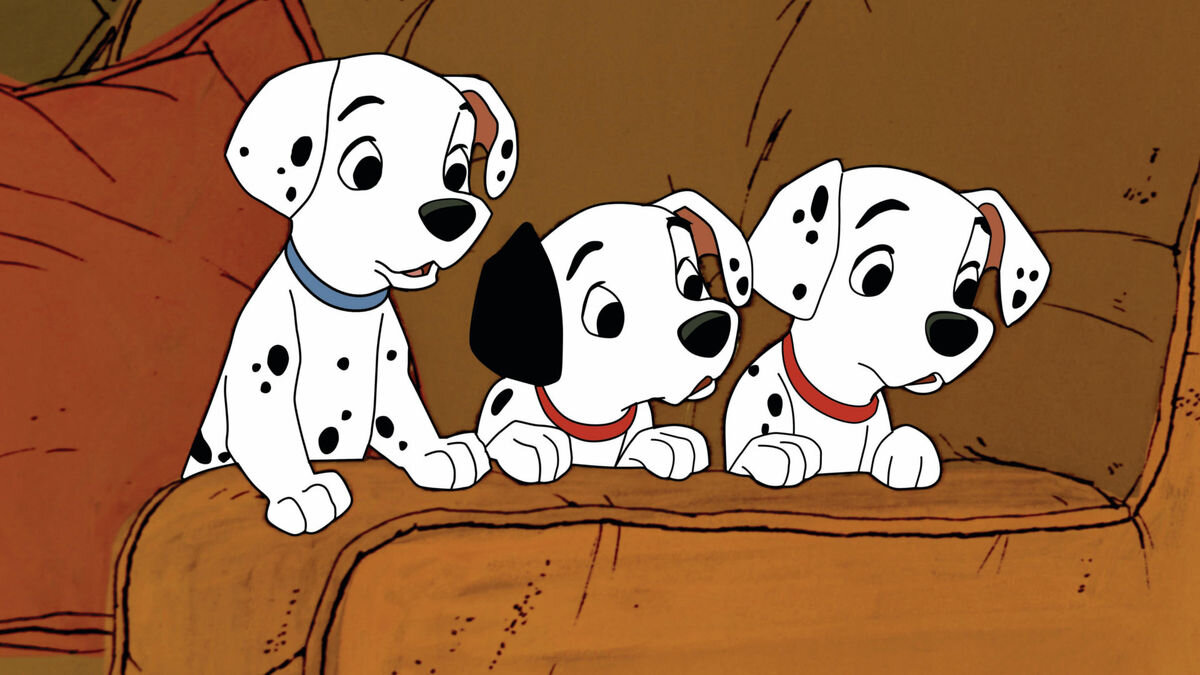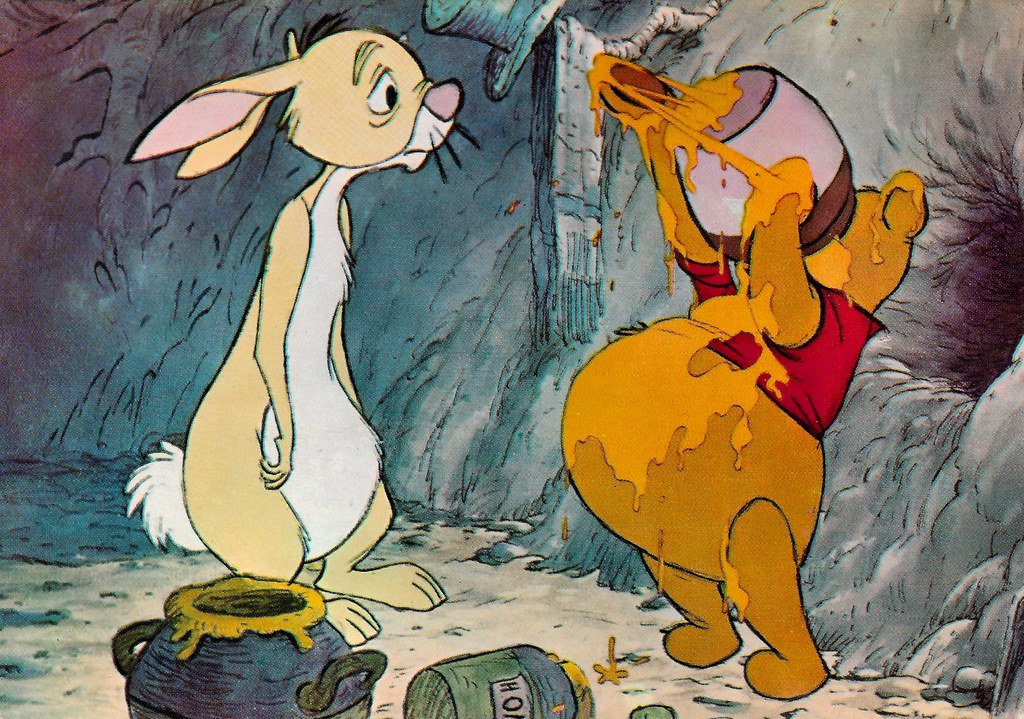Disney's First Contemporary Film: 101 Dalmatians
This year, Walt Disney Animation Studio’s 17th film turned 60 years old. Though today it has become a classic film filled with 1960s nostalgia, it has still remained a timeless and contemporary film. 101 Dalmatians was released on January 25th, 1961. This animated film stands out from its predecessors because of it’s use of xerography - a process in which the ink and painting step became retired. Animators could transfer their pencil drawings straight to animation cels. This change in the process marked a significant growth period for the studio, as people were drawn back into the films rather than being distracted by the parks and television shows. 101 Dalmatians not only adapted a contemporary way of animating, but it also features many contemporary elements in it. Let’s explore what else 101 Dalmatians introduced to the Disney universe.
101 Dalmatians puppies. Image from: https://letterboxd.com/film/one-hundred-and-one-dalmatians/
Reality Over Fantasy
Something that Walt really prided himself on was his ability to keep his imagination alive even as he grew older. His desire to recreate century-old fairytales is what put him on the map in the first place with Snow White and the Seven Dwarfs. The use of fantasy in his storytelling is what made Disney stand out from all other film studios in the early days. Pinocchio, Cinderella, Alice in Wonderland, Peter Pan, and all of Disney’s first few films were all set in a fantasy world. 101 Dalmatians was the first ever Disney animated film to be set in the real world, with real situations that could occur. The only thing that made it fantasy was the fact that the dogs could speak. 101 Dalmatians was set in London, with Roger and Anita living in a quaint, eclectic home. There are no castles, no fairies, and no curses. This is the first time the studio really played with reality over fantasy. I would argue that the next time after this film that they based a story in reality is The Hunchback of Notre Dame (1996).
Roger, Anita, and the puppies. Image from: https://www.laughingplace.com/w/articles/2021/01/25/101-dalmatians-60-years-later-how-a-spot-on-technology-saved-feature-animation/
Physicality Between Characters
Though we have witnessed sweet true love’s kisses since Snow White, until 101 Dalmatians, we had not seen a couple show much physicality and flirtatiousness until Roger and Anita. There wasn’t any romance between the stories of Snow White and Cinderella, in which both portray one kiss at the end, and one dance in Cinderella. Roger and Anita first meet BECAUSE they become close to each other when Pongo and Perdita tie them together with their leashes. They are shown hugging, dancing, holding hands, and placing their arms around each other throughout the movie. It really brings a sense of warmth and reality that had never been seen before in a Disney movie. Milt Kahl, one of the Nine Old Men, was responsible for designing both Roger and Anita.
“That was the first time where, here’s a married couple who clearly is physical toward each other, and there’s a flirtation going on.”
Roger and Anita. Image from: https://www.mov.onl/2021/04/one-hundred-and-one-dalmatians.html
Television and Commercials
The first time a television set is shown in a Disney film is in the scene where Pongo, Perdita, and all of their puppies are shown sitting around the living room watching it together. In contrast to Lady and the Tramp (1955), where the story is based several decades earlier in 1909, 101 Dalmatians takes place in 1958, just 3 years before it was released. Television became a huge phenomenon throughout the 1950s with sitcoms and branded commercials, that it only made sense to feature it in this film. According to an article by Michael Stephens, “the number of television sets in use rose from 6,000 in 1946 to some 12 million by 1951”.
The commercial shown in 101 Dalmatians, Kanine Krunchies, followed what similar real-world commercials were like in the late 1950s. The black-and-white commercial featured a slogan, a jingle, and a cute animation to close out the commercial.
Pongo, Perdita and the puppies watching the Kanine Krunchies commercial. Image from: https://www.artstation.com/artwork/yaVL5
Cigarettes
Though the image of Pinocchio smoking a cigar was burned into the mind’s of a generation that was terrified of Pleasure Island, cigarettes and smoking had not been depicted in any other Disney film until 101 Dalmatians. Both a cigarette, held by Cruella de Vil, and a pipe, smoked by Roger, were featured in the film. According to an article titled “The Changing Public Image of Smoking in the United States: 1964–2014” by K. Michael Cummings and Robert N. Proctor, by 1953 47% of adults were smoking cigarettes, and it wasn’t until 1957 that the US Public Health Service stated that smoking could be linked to lung cancer. Though the film is set a year later, cigarettes were still highly used at the time and would reach it’s peak in the early 1960s.
In 2007, Disney banned smoking cigarettes on-screen from all of their movies. Disney then put out another press release in 2015 stating that the ban would be extended to all of their other studios, including Marvel and Lucasfilm Ltd. It was only allowed if it depicted a historical figure who did smoke, or if smoking was shown in a negative light. Disney also added smoking warnings to the beginning of their DVDs.
Cruella de Vil smoking a cigarette. Image from: https://thegreatdisneymovieride.home.blog/2020/03/15/one-hundred-and-one-dalmatians-1961/
Abstract Backgrounds
Something the animators really focused on was their attention to detail. Each character was sketched with care, and each expression was carefully modeled after live action references and the animator’s own faces. Disney really brought forward their attention to detail with their backgrounds beginning with Sleeping Beauty in 1959. Artist Eyvind Earle was responsible for creating the incredible backgrounds we see throughout the film, it was the first time Disney really experimented with their style. The difference with 101 Dalmatians, was that it was the first time clean lines weren’t prioritized due to the nature of the sketchy look with the xerox process. Ken Anderson, an art director for both Disney films and Disney parks for over 40 years, was responsible for the abstract backgrounds shown in 101 Dalmatians. He really liked the idea of colors not staying within the lines, and playing with the faded neutral blues, greens, and browns.
Ken Anderson’s art background for 101 Dalmatians. Image from: https://thegreatdisneymovieride.home.blog/2020/03/15/one-hundred-and-one-dalmatians-1961/
Ken Anderson’s art background for 101 Dalmatians. Image from: https://twitter.com/sylvainsarrailh/status/821864226767642624
Walt on the other hand, wasn’t a fan of the abstract look with the asymmetry and angular shapes. He loved Dodie Smith’s story of the dalmatians, and was disappointed with some of the artistic aspects in the end. Ken Anderson held that on his shoulders for a while, until a few days leading up to Walt’s death, Ken explained that he knew Walt had forgiven him for it.
“Ken Anderson in 101 Dalmatians brought a whole different look, very angular, and abstract. It’s very modern in its look.”
The modern elements in 101 Dalmatians has made it into a film that anyone of any age could watch and relate to. Roger and Anita’s relationship, their love for their puppies, and Pongo and Perdita’s adventure remains a significant part in animation history. This film opened up modern opportunities that the studio had not explored yet. It allowed the animators to be progressive and move forward with their stories rather than setting them in a past time.
“These are characters we hadn’t seen in a Disney film before. Cruella de Vil smokes cigarettes; the dogs watch television.”














